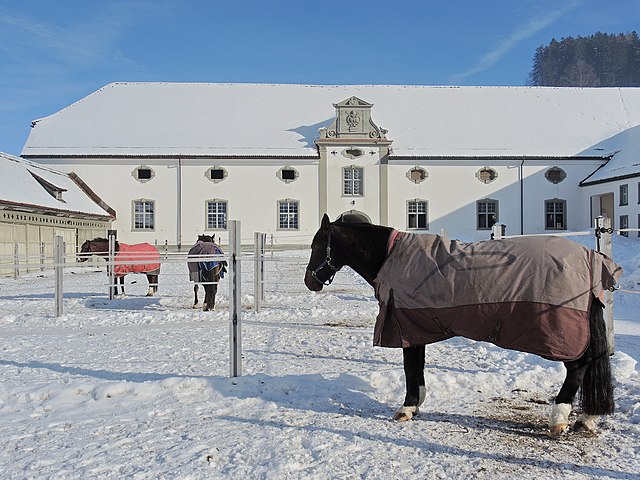The Shagya Arabian is a horse breed which was developed in the Austro-Hungarian Empire during the 19th century at the Bábolna, Mezőhegyes, Radautz, Piber, and Topolcianky studs. Today it is most often seen in the Czech Republic, Austria, Romania, the former Yugoslavian countries, Poland, Germany, and Hungary, but has been exported to other nations and is bred around the world. A purebred Shagya Arabian today has bloodlines that can be traced in all lines to the stud books of Rădăuți, Babolna, and Topolcianky. The breed is considered by some to be a subtype of Arabian horse, but due to the presence of a small amount of non-Arabian breeding others consider it to be an Anglo-Arabian or a partbred Arabian.
Shagya Arabian
Statue of Shagya at Babolna
The purebred Arabian stallion Jasir, who also appears in many Shagya pedigrees. Carl Raswan photo, 1912
A young Shagya Arabian
A stud farm or stud in animal husbandry is an establishment for selective breeding of livestock. The word "stud" comes from the Old English stod meaning "herd of horses, place where horses are kept for breeding". Historically, documentation of the breedings that occur on a stud farm leads to the development of a stud book. Male animals made available for breeding to outside female animals are said to be "standing at stud", or at "stud service", referencing the relatively high probability that they are kept at a stud farm.
A Thoroughbred horse stud farm, Murrurundi, New South Wales
Einsiedeln Mews with Cavalli della Madonna horses.
The Međimurje horse stud farm, Žabnik at Sveti Martin na Muri, in Croatia, is owned by the Međimurje nature public institution
A large stud farm in Gdynia, Poland








